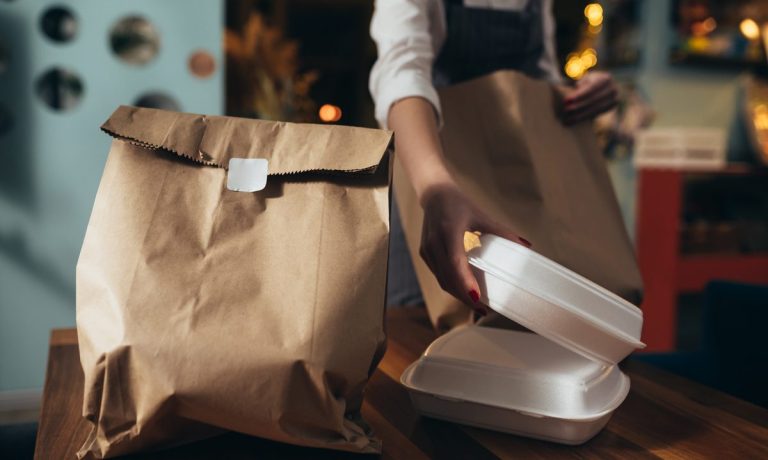
For years, restaurant industry experts have debated whether the third-party aggregator delivery model will ever be profitable. Now, a year and a half after online ordering surged following the first wave of COVID-19 lockdowns, it seems that nobody is any closer to finding a solution. Even DoorDash, the top delivery service in the United States, continues to operate at a loss, while all the major food delivery services have been branching out into other categories of delivery to supplement restaurant meal delivery’s narrow profit margins.
See also: DoorDash Sees Record Orders Eaten Up By Rising Costs
Restaurants Seek In-House Alternatives To Third-Party Aggregators
Yet even as these aggregators struggle to make a profit on meal delivery, restaurants and consumers are also growing tired of the current model. Restaurants struggle to afford the services’ costly fees, while consumers grow frustrated with the price hikes and additional fees levied on each order. For now, it seems like a system in which there is no winner.
That is where Lunchbox, an online ordering engine that aims to be more restaurant-friendly, comes in. Earlier this month, the company announced the acquisition of Spread, a startup that offers a digital ordering option that charges a flat rate, rather than taking a large percentage of the profits from each sale. Through this acquisition, Lunchbox is creating a commission-free digital ordering platform.
“Consumers have become conscious of how marketplaces like Uber Eats and others aren’t to the benefit of their favorite restaurants/brands,” Nabeel Alamgir, co-founder and CEO of Lunchbox, told PYMNTS in an interview. “With this acquisition we intend to carry the mission forward that Andy [Wang, Spread co-founder and CEO] and the team already established — a marketplace built for the success and discovery of restaurants, not against.”
All In The Delivery
Lunchbox describes the new marketplace as a “no-commission delivery platform,” though when asked, Alamgir said, “The restaurants will leverage their existing relationships with couriers.” In other words, the platform will act as a marketplace and an aggregator and will power the digital ordering, but restaurants will need to provide their own delivery.
Online delivery ordering has skyrocketed in the last year and a half, and with this rise, restaurant aggregators’ customer bases have grown enormously. For our study The Bring-It-To-Me Economy: How Online Marketplaces And Aggregators Drive Omnichannel Commerce, created in collaboration with Carat by Fiserv, PYMNTS researchers surveyed a census-balanced panel of more than 5,000 U.S. consumers, finding that 61 percent of shoppers now order restaurant meals online and that 58 percent do so more often than before the pandemic. Additionally, 46 percent order meals through a restaurant aggregator more often than they did before the pandemic.
As order volumes soar, the economic weaknesses of the aggregator model become clearer, demanding new solutions. Even as leading aggregators launch tiered options and a limited suite of lower fee services for restaurants, the problems persist. Lunchbox’s new platform aims to offer an online ordering option that will be sustainable for restaurants long-term, as their digital mix continues to grow.
Read more: DoorDash Serves Up New Delivery Pricing Plans For Restaurants
Alamgir declined to comment on the economics of the platform, though Restaurant Business reports that the new platform will eliminate Spread’s existing $1 fee, adding that Spread’s income comes primarily from selling marketing opportunities to its vendors.
Laying Down The Law
Part of the value proposition that Lunchbox offers restaurants is that it shares customer data with them, unlike many other third-party aggregators, which can block the restaurant out of the relationship with the customer by withholding that data.
New York City recently approved a bill that requires third-party food delivery services to share this information with restaurants whenever they request it, but Alamgir says that he does not view legislations such as these as a threat to Lunchbox’s core value prop. Instead, he argues that it validates the model.
Related news: NYC: Delivery Services Must Share Data With Restaurants
“[This law] shines a light on what’s been a problem since the conception of third-party marketplaces — that the relationships are one-sided and not built to be in favor of the industry,” he said. “The ridiculous commission fees are what everyone hears but the silent killer is the lack of guest data that these restaurants are getting.”
The Road Ahead
Looking ahead to digital ordering in the future, Alamgir believes that businesses’ ability to leverage consumer data will evolve, leading to a “super intuitive and easy” online ordering experience. Additionally, he believes that we will continue to see more ghost kitchens emerge.
To that point, in the last month alone, grocer Kroger announced that it would bring virtual restaurant brands to its supermarkets, Wendy’s revealed that it will have 700 ghost kitchens by 2025, and DoorDash doubled its ghost kitchen presence (albeit from one location to two).
You may also like: Kroger Brings Ghost Kitchens To Stores With Kitchen United Partnership
Wendy’s To Open 700 Delivery-Only Locations In The Next Five Years
DoorDash Opens Second Virtual Kitchen
By 2022, Alamgir hopes to bring Lunchbox’s fee-free marketplace global. He said, “We’re planning on launching in international markets by the end of this year.”